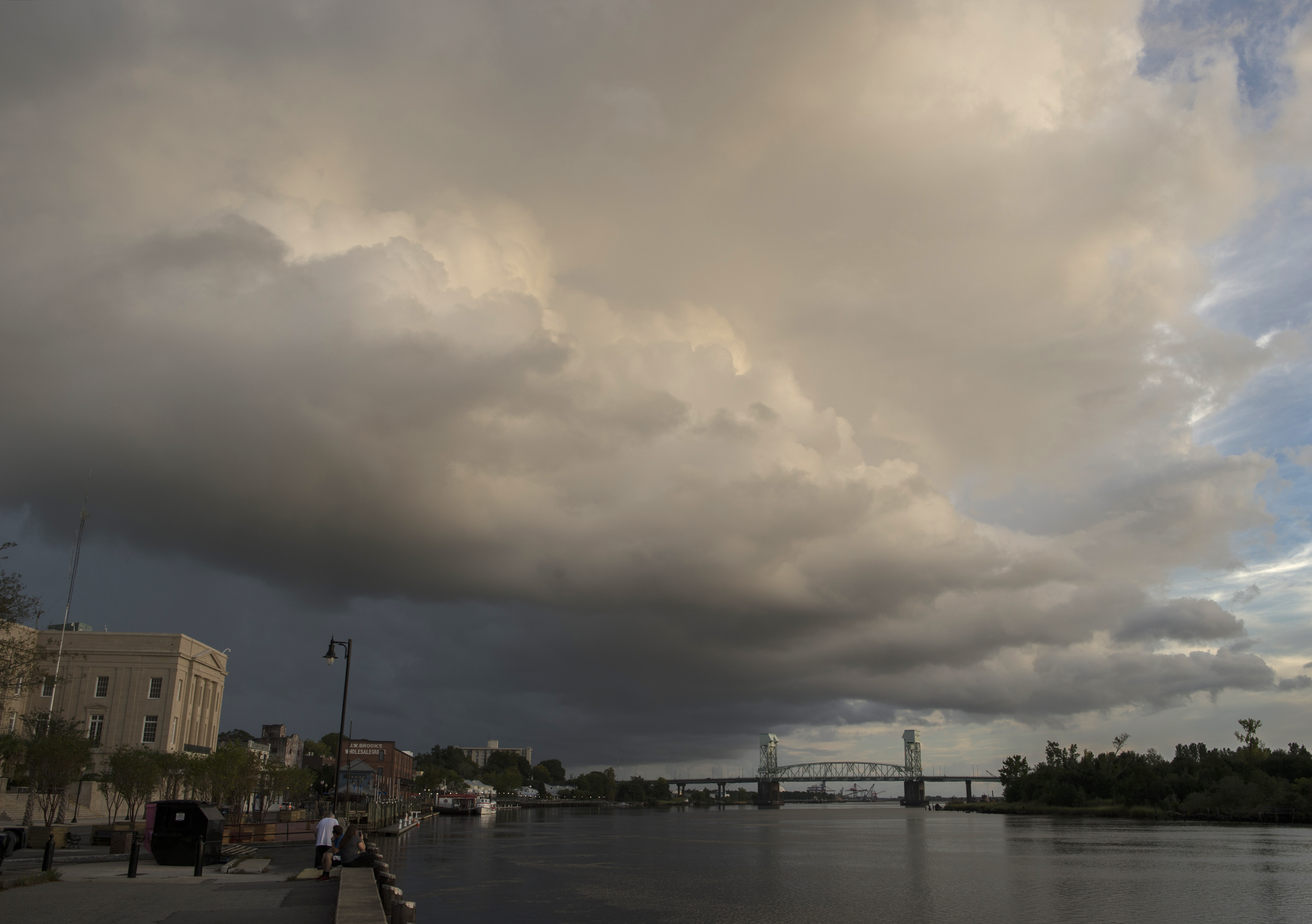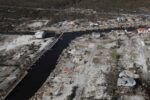Why a weaker, Category 2 hurricane is still dangerous
A large rain cloud passes over a day before the arrival of hurricane Florence in Wilmington, North Carolina, on September 12, 2018 (ANDREW CABALLERO-REYNOLDS)
Wilmington (United States) (AFP) – Hurricane Florence was downgraded to Category 2 storm on Thursday, but forecasters cautioned that the mammoth storm still poses a major threat to millions of people. Here’s why.
– Wind speeds –
“There’s more to the story than the category,” said Brian McNoldy, a researcher at the University of Miami’s Rosenstiel School of Marine and Atmospheric Science.
“While the peak winds have fallen, they are still strong enough to be destructive to houses and trees, and the water-related threats (storm surge and rain) remain a very big concern,” he wrote in a blog post Thursday.
Hurricanes are categorized on a scale of 1 to 5, with 5 being the strongest. These categories are based only on the speed of sustained winds, not other deadly factors like storm surge, rainfall or flooding.
A Category 2 storm packs sustained wind speeds of 96-110 miles per hour (154-177 kilometers/hour) and is no longer considered a “major” storm — a class belonging to hurricanes Cat 3 and up.
However, a Cat 2 storm’s wind speed is “extremely dangerous,” according to the National Hurricane Center, capable of ripping trees from the ground, wreaking major roof damage on homes and causing power outages that may last weeks and affect three million households.
The storm has a wide reach, too. Tropical storm force winds extend up to 200 miles (320 kilometers) from the center.
– Storm surge –
Storm surge can be the deadliest part of a hurricane, and is only partially affected by wind speeds.
The term “storm surge” refers to rising seas that are whipped up by a storm.
“I don’t care if this goes down to a Category 1,” said CNN meteorologist Chad Myers.
“We’re still going to have a Category 4 storm surge.”
High tides and increasing sea levels from climate change can magnify the effects of storm surge, and surge doesn’t necessarily weaken in step with wind speeds.
The coastal areas of North Carolina are expected to bear the brunt of the storm surge, with a nine to 13-foot (four-meter) wall of water pushing inland.
Any “flooding will be worse around high tide, and a slow-moving storm will stick around for at least one tide cycle,” explained McNoldy.
– Devastating floods –
Florence is moving slowly, about 12 miles per hour (19 km/h) on a meandering track along the coast.
A crawling pace can be even more punishing than a fast one, because it lets the storm stall in one area as it dumps more and more heavy rain.
Forecasters say 40 inches (one meter) of rain are possible along the coast of North Carolina.
“This rainfall would produce catastrophic flash flooding and significant river flooding,” the National Hurricane Center said.
Florence’s flooding is expected to reach far inland, with more than one foot (30 centimeters) expected in some areas.
Disclaimer: This story has not been edited by Siliconeer and is published from a syndicated feed. Siliconeer does not assume any liability for the above story. Validity of the above story is for 7 Days from original date of publishing. Content copyright AFP.


